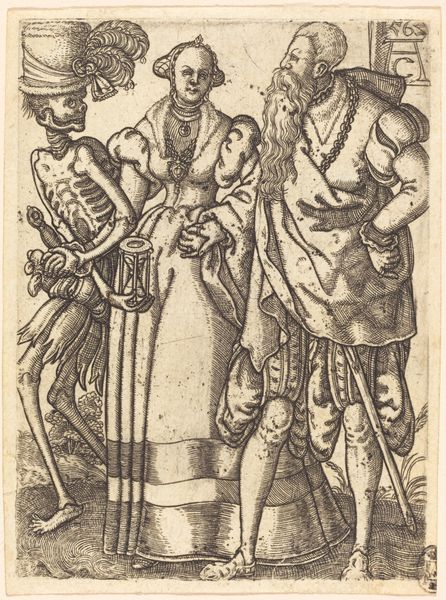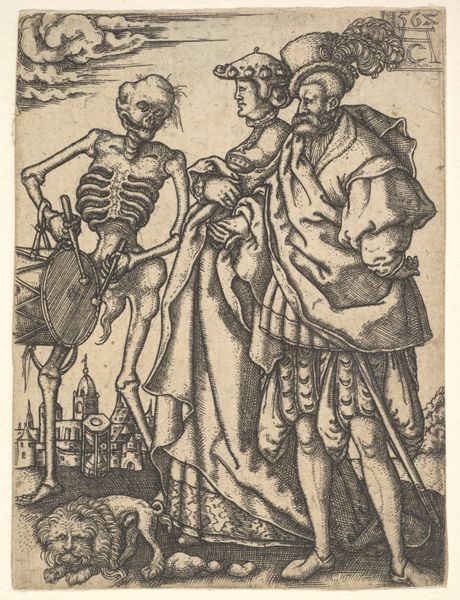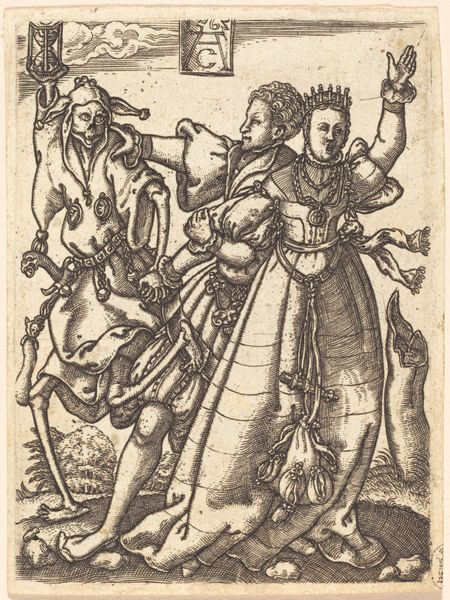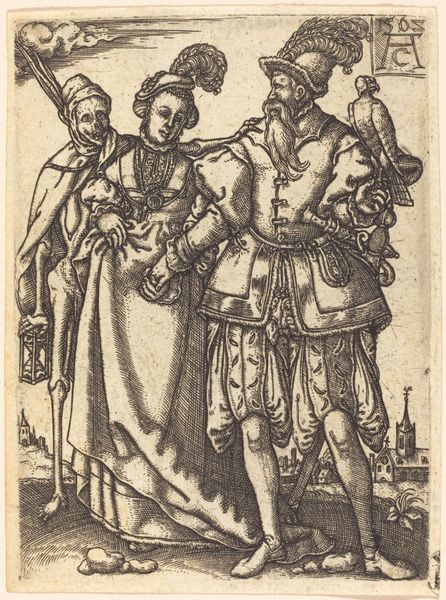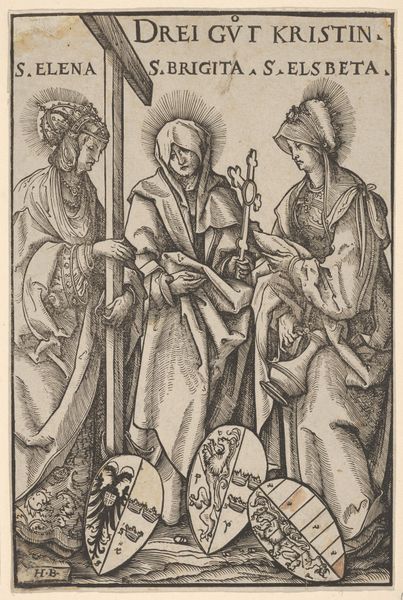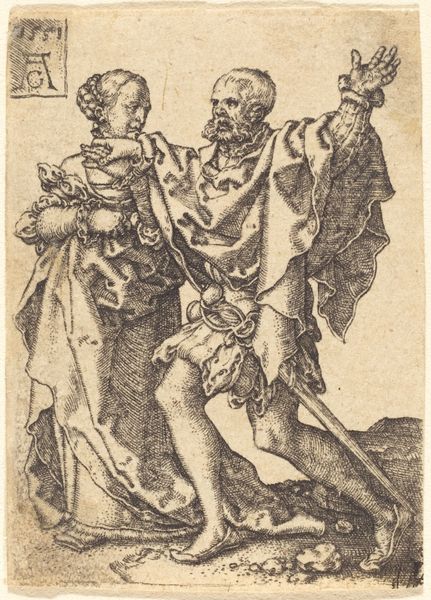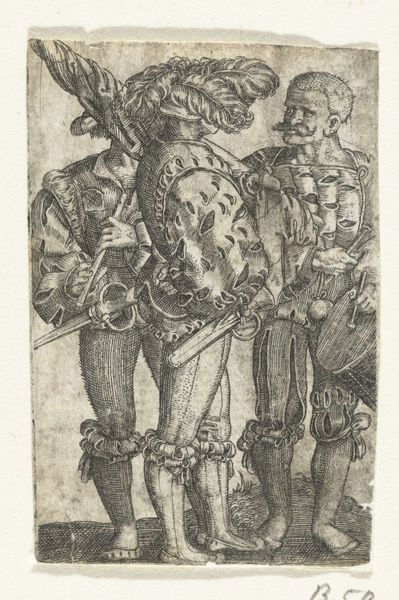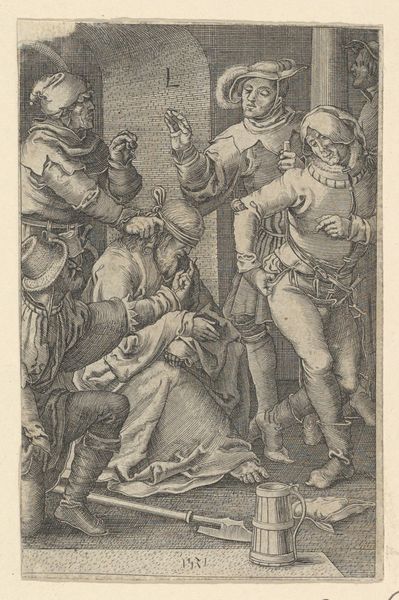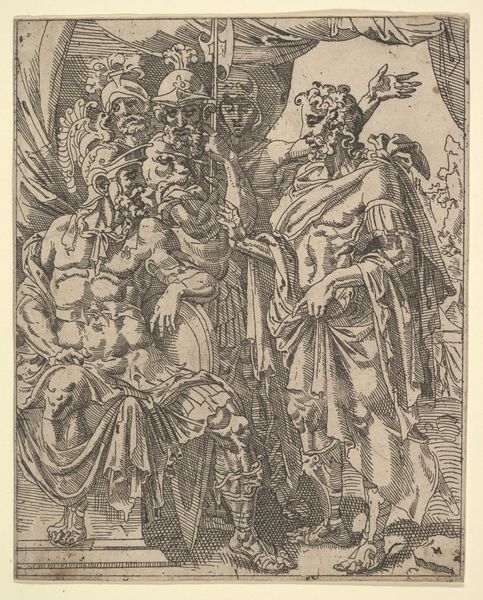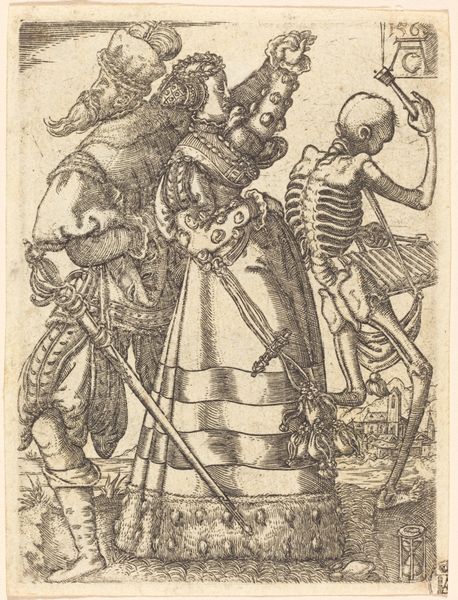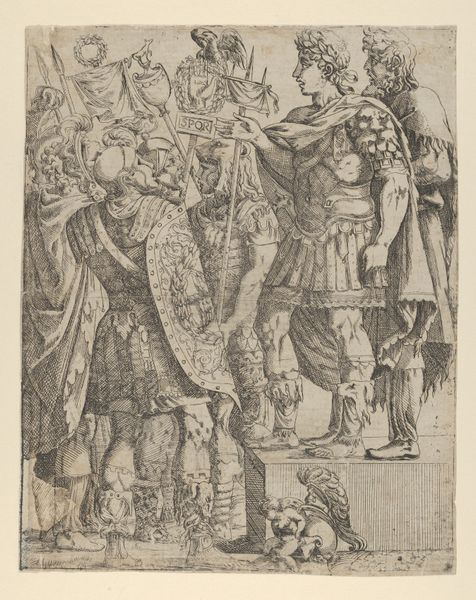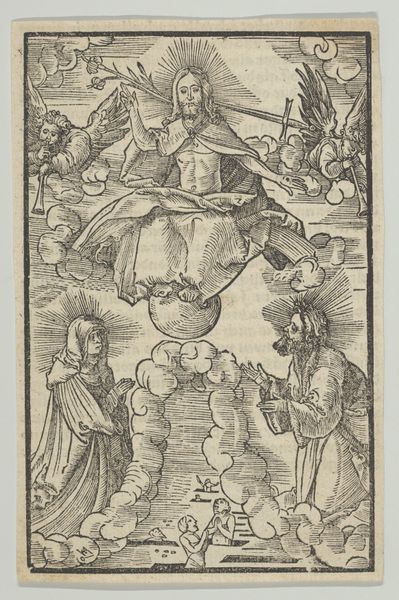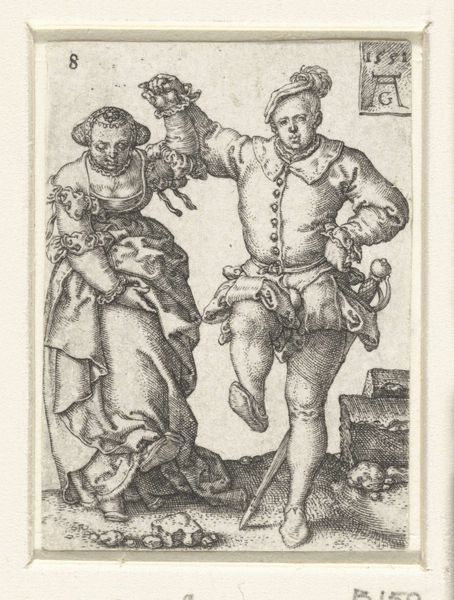
print, engraving
#
medieval
# print
#
figuration
#
history-painting
#
engraving
Copyright: National Gallery of Art: CC0 1.0
Editor: This engraving is called "Dance of Death IV" by Allaert Claesz., made in 1562. It depicts a skeletal figure embracing both a woman and a man. The starkness of the image makes me think about the inevitability of death. What social statements can we attribute to it? Curator: The "Dance of Death," or *Danse Macabre*, was a prevalent theme in the Late Middle Ages and Early Renaissance. It served as a memento mori, a reminder of mortality. In a period marked by plagues and social upheaval, images like this had strong resonance, functioning as a critique of social hierarchies. Notice how Death embraces a richly dressed woman and a bearded man – Death comes for everyone, regardless of their status. Editor: So, it’s not necessarily a morbid fascination, but more of a social leveler in artistic form? Curator: Precisely. Think about the role of art in the 16th century. Prints like these, widely distributed, made art more accessible, extending its message to a broader public. The accessibility democratized the contemplation of death. Consider the context of the Reformation and the questioning of established power structures. How might this image fit into that context? Editor: I hadn’t thought of the Reformation's impact. So the print medium amplified the statement of the image to a larger population already questioning authority. Also, the symbolism would make the illiterate ponder over the imagery even without text. Curator: Exactly! The "Dance of Death" becomes a powerful visual sermon, highlighting earthly vanities versus spiritual preparedness. How does the presence of Death change how you see wealth and status depicted? Editor: It makes it all seem so temporary, almost like a costume. It highlights what’s lasting, or perhaps what we *should* consider lasting. Thanks, I have a much clearer idea of this work and the context it reflects. Curator: It highlights the public function of art as a vehicle of ideological exchange, even today.
Comments
No comments
Be the first to comment and join the conversation on the ultimate creative platform.
